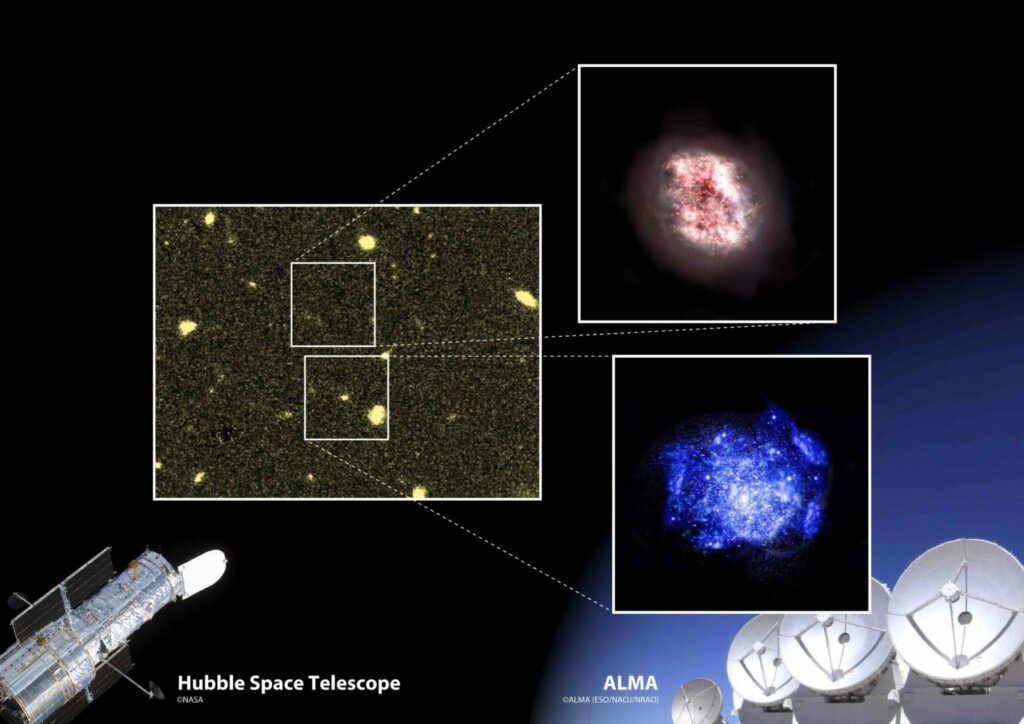DAWN discovers hidden galaxies
Have you ever wondered how the universe began and where it all comes from? The Center of Excellence Cosmic Dawn Center (DAWN) at DTU and KU are now one step closer to a better understanding of the universe. A team of researchers have discovered two previously invisible galaxies, which were hidden by cosmic dust, 29 billion light years away. The study has been published in the scientific journal Nature.

A thick layer of cosmic dust has been hiding two galaxies 29 billion light years away. Associate Professor Pascal Oesch, from the Center of Excellence DAWN at the University of Copenhagen (KU) and the Technical University of Denmark (DTU), is part of the international research team behind the discovery and includes researchers from Japan, the US, and the UK. The discovery suggests that up to one in five distant galaxies remains hidden from the telescopes that are available today. The study has been published in the scientific journal Nature.
“We were looking at a sample of very distant galaxies, which we already knew existed from the Hubble Space Telescope. And then we noticed that two of them had a neighbor that we didn’t expect to be there at all. As both galaxies are surrounded by dust, some of their light is blocked, making them invisible to Hubble,” said Associate Professor Oesch, from DAWN, who is co-author on the study.
A new look at our map of the heavens
The new discovery suggests that between 10 and 20 percent of the galaxies in the universe are missing from our map of the heavens and may be hiding under cosmic dust. Before researchers can start to understand when and how galaxies formed in the universe, it is important to get a proper accounting. NASA, ESA, and the Canadian Space Agency have built a new super telescope called the James Webb Space Telescope, which will be launched into orbit on December 18, 2021. The researchers hope that the new telescope will help contribute to a better understanding about how the universe was formed by helping them see through the cosmic dust.
“The next step is to identify the galaxies we overlooked, because there are far more than we thought. That’s where the James Webb Telescope will be a huge step forward. It will be much more sensitive than Hubble and able to investigate longer wavelengths, which ought to allow us to see these hidden galaxies with ease,” said Associate Professor Oesch. He added:
“We are trying to put the big puzzle about the universe’s formation together and answer the most basic question: ‘Where does it all come from?’ The invisible galaxies that we’ve discovered in the early universe are some of the first building blocks of the mature galaxies we see around us in the universe today. So that’s where it all began.”
The two hidden galaxies, which are being called REBELS-12-2 and REBELS-29-2, were found by using the ALMA telescope, which is uses radio signals or interference from light waves to pick up signals from the hidden galaxies.
Read the scientific article in Nature here
More information about the new study at DAWN here
